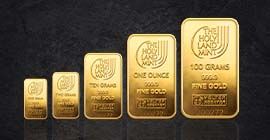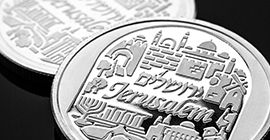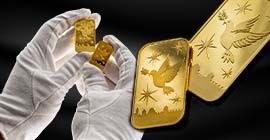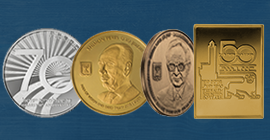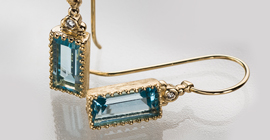History Of Gold, Part 3: The Power Of Gold Is Rediscovered
The golden age, which brought abundance and prosperity to the world, came to an end with the wars and economic crises of the 20th century. Governments continued to stockpile gold, but retained the freedom to print money indefinitely. When the glittering metal proved that its value derives only from its natural properties and does not depend on political and economic institutions - its value soared sharply. The third and final part of the article on the history of gold.
In the previous section of the article on the history of gold we described the economic miracle that occurred when all world countries agreed to anchor their national currencies in the gold reserves in their possession. It was a period of prosperity in international trade and unprecedented abundance, dubbed the Golden Age and lasted from the 19th century until the beginning of the 20th century.
Despite the great benefits of the gold standard, countries were tempted to shun it when World War I dragged them into heavy financial spending. The gold standard required them to limit their spending according to the amount of bars and bullion coins in their possession, and they chose to get rid of it in order to print money at their will. After the Great War, some countries returned to the gold standard but for limited periods only.
The severance of the connection between national money and the gold reserves of the countries did not indicate a loss of confidence in the economic power of the rare metal - quite the opposite. The use of gold as a global economic anchor continues unabated, in a more challenging and less stable global environment.
Gold's safe haven
Over the years, gold has gained the status of Safe Haven. It has proven itself as an independent asset, free from all dependence on political institutions and with economic value deriving from its natural features. As a result, gold has established itself as a financial instrument that is guarded at all times and turned to in times of need. In a time of economic and political crises, as the world experienced at the end of the golden age, its value soared vigorously.
From right to left: Lady Fortuna, the Dove of Peace and Perth Mint gold bars.
The decision to withdraw from the gold standard was influenced in part by the decision of countries that have done so. They feared that citizens frightened by the chaos of World War I would rush to exercise their right, enshrined in law according to the gold standard, to convert ordinary banknotes and coins into bars and bullion coins. They were expected to do so to ensure that their assets were safest, but such a "run to the gold" could deplete the countries' gold reserves and wipe out national wealth. Therefore, the governments withdrew from the gold standard and from the promise that had been made until then, that everyone was entitled to convert the regular banknotes and coins in their hands into gold at any time. Accordingly, restrictions were also imposed on trade in precious metals, which had previously been completely free, as part of the principles of the international gold standard.
But memories of the era of abundance and stability of the gold standard still shone and influenced economists, traders and politicians who expressed a desire to return to that peak period. For example, a paper published by an international financial body in 1932 stated that "the gold standard remains the best possible monetary mechanism, the most appropriate for global trade and international financing to flow freely." *
Years later, economist Alan Greenspan, the future chairman of the Fed (US Federal Reserve), returned nostalgically to the heyday of the gold standard. In a 1966 article, Greenspan wrote that "the gold standard enables the existence of a free banking system that protects the stability of the economy and balanced growth. "When gold is accepted as a means of exchange by most or all countries, an international, free and uninterrupted gold standard develops which serves to promote the widest global division of labor and international trade."
Despite these strong claims, the world has never returned to the gold standard. Precious metal was no longer a free tool for global trade - but its role as an emergency asset intensified.
Gold reserves in the Great Depression
In 1929, the Great Depression hit the United States, leading to a 90% stock market crash, thousands of banks collapsing, unemployment and severe poverty. As part of an effort to emerge from the economic disaster, US President Franklin Roosevelt issued an unusual order that nationalized most of the gold held by citizens. According to the decree of 1933, anyone holding gold coins or bars was required to bring them to the US Federal Reserve and convert them into dollars. At the same time, the United States jumped the price of gold from the rate set with the application of the gold standard, $ 20.67 - to $ 35 per ounce. The appreciation in value encouraged foreign traders to sell gold and increased the US Treasury liquidity.
In the following years, the economic crisis that became global caused the clouds of war to recur over Europe. To protect their resources, Britain and France moved much of their national gold reserves to a safe shore across the ocean in America.
This is how an ironic situation is created: while the gold standard is losing its power, the United States' gold reserves have swelled to an unprecedented high - because of its nationalization from its citizens and its purchase from foreign countries. It is no coincidence that in those years the United States built the Golden Fortress at Fort Knox, which is considered one of the most secure sites in the entire world. The Golden Fortress was built in a protected environment, away from the shoreline, to which the ingots of the United States government and other countries were transferred.
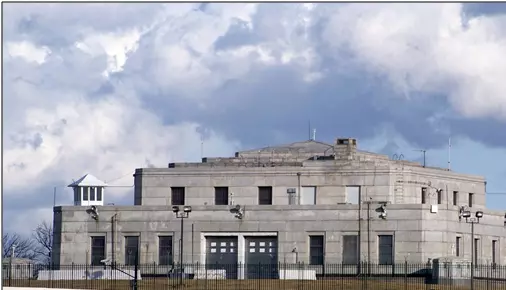
Fort Knox Fortress, or as it is officially called - "The US Bullion Depository".
Roosevelt gave his government the freedom to print unlimited amount of dollars to fund the Great Depression rescue plan. In practice, the United States was careful not to exceed a certain ratio between the gold reserves in Fort Knox and the amount of dollars in circulation, thus continuing to maintain a partial gold standard. Of course the basements full with gold of Fort Knox made it easier for the country to fulfill that goal.
The golden anchor of the dollar
The next turning point in the status of gold came with the end of World War II, again under the leadership of the United States. The Americans wanted to rebuild the global payment system to advance two goals at once: make the dollar the heir of gold as the global currency, the scale by which assets are measured and international trade conducted; And strengthen their economic position against the Soviet Union in the run-up to the Cold War that began to develop between the two powers.
It was clear to the Americans that the world still believed in gold, so they promoted a sophisticated agreement which relied on the glittering aura of gold to make the dollar king in its place. The monetary agreements signed in the summer of 1944 in the town of Burton Woods in the state of New Hampshire set a new international standard, for the first time since the end of the gold standard era. The 44 allies agreed to an arrangement whereby the US currency would be traded at the fixed rate of $ 35 per ounce of gold - and all other currencies would be traded at an agreed rate against the US dollar. States were given the right to convert dollars into gold, but it was clear to everyone that citizens would no longer be given that right.
The Burton Woods agreements lasted for about two decades. The power of the American superpower grew, the reserves in Fort Knox grew - and the golden anchor of the dollar ensured international confidence. But towards the end of the 1960s, this period also came to an end.
Inflation is rampant and gold value soars
The global upheavals led to another change in the rules of the game. The very costly entanglement of the Americans in the Vietnam War undermined their confidence and that of other countries in international agreements. Various countries began demanding that the Americans abide by the international agreements signed at the end of World War II - and repay debts in gold.
The United States was not happy, of course, about the need to remove gold from the Fort Knox Fortress. At the same time, as in previous war periods, the US administration urgently needed cash to fund the battles in Vietnam. The printing of dollars accelerated, inflation soared and a new order was created.
In 1971, President Richard Nixon's administration released a dramatic economic program dubbed "The Nixon Shock." As part of the plan the Burton Woods agreements were finally repealed and the gold standard was abolished, in the United States and eventually worldwide.
In the years that followed, gold faced the free market, completely free from the weights of international agreements that set its course. In the 1970s, inflation raged, and investors looking for investment alternatives turned to gold - and its value soared. In the 1980s and 1990s, stock and bond markets strengthened relatively, and according to expectations, gold traded in the opposite direction, so its price remained unchanged and even declined slightly, but in the dot.com crisis of 2000 and the financial crisis of 2008, when stock markets plummeted and governments printed trillions. To bail out the banks and the rest of the financial system - investors rushed back to the stable metal.
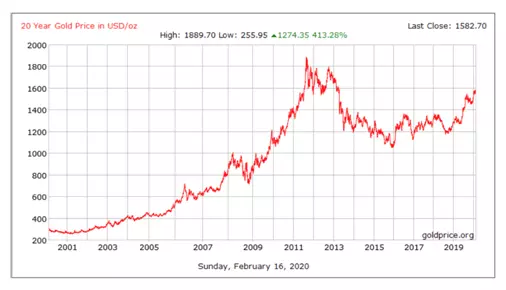
Change in value of an ounce of gold, in dollars, between the years 1973-2020
In the last decade the value of gold has continued to climb. In the last year alone, the golden rate has jumped by tens of percent amid fears of an impending economic crisis. Gold has continued to prove, time and time again, its value as an investment independent of monetary and political manipulations - a refuge asset whose value is maintained and increases as the prices of other assets fall.
* Taken from a paper published by the Bank for Clearing Arrangements (BIS) in 1932
Shop gold for investment now >>
Contact one of our representatives >>
The information contained in this website should not be construed as investment advice or as a substitute for investment advice suited to your own individual financial needs for purchase or investment, investment activities or transactions, or as recommendations or opinions as to the benefits of investing in gold or in any other specific products. The information contained in this website does not constitute an alternative for investment advice and you should not act upon it, before seeking advice adapted to your own personal situation and needs.

